Space for All! Eurisy contribution to the 73rd edition of the International Astronautical Congress
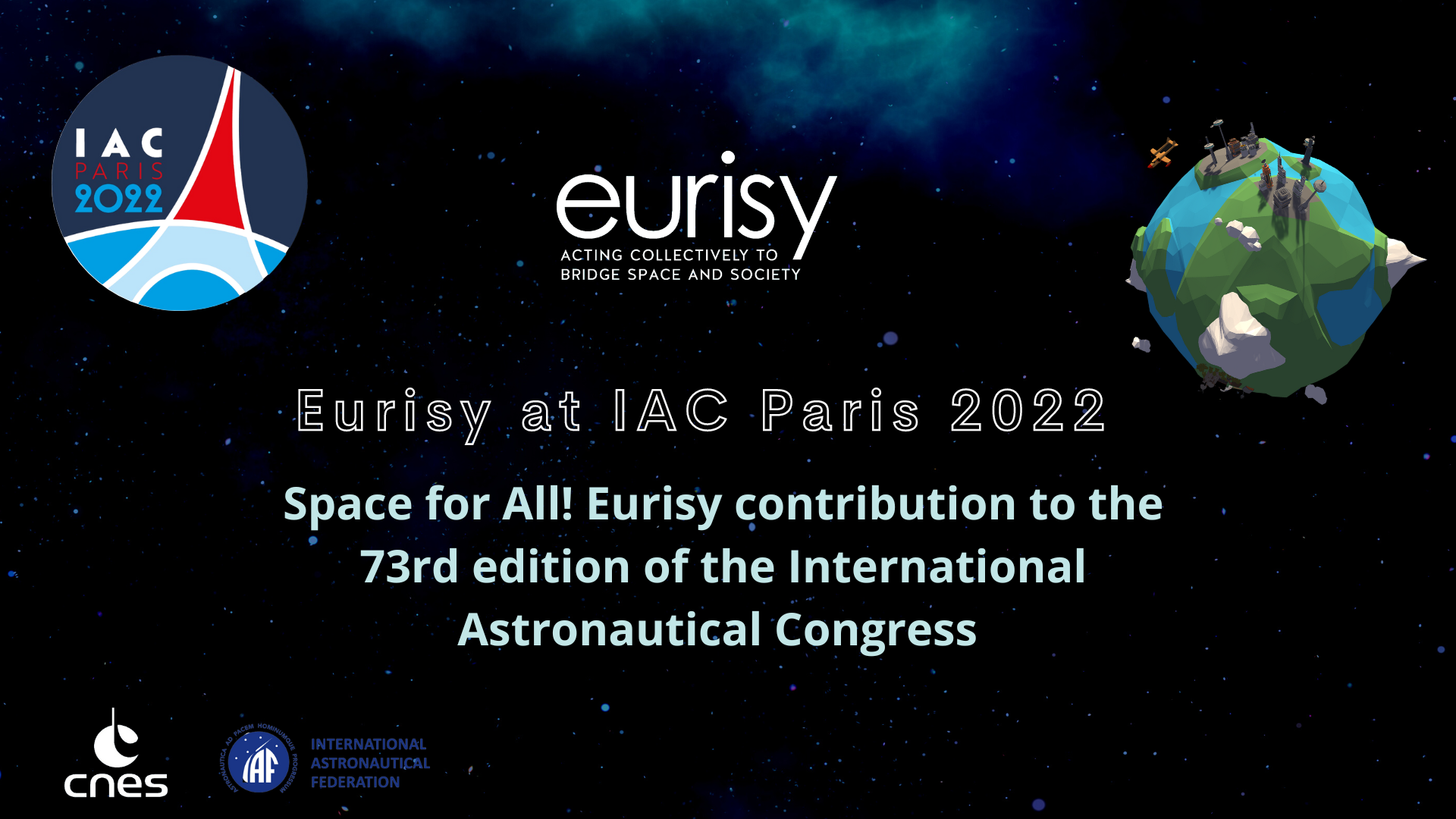
After a successful International Astronautical Congress in Dubai, the biggest global space congress returned to Europe, in Paris, for its 73rd edition!
The International Astronautical Congress (IAC) is the largest global space forum where, once a year, space stakeholders come together to discuss the latest trends and developments and to shape the future of the sector. Every year, the Congress switches location and theme.
IAC2022 has been inaugurated as “Space for @ll”, to highlight the tremendous change experienced by the sector in the lasts decades transforming it from a closed sector accessible only to a handful of engineers into a transversal, multidisciplinary industry enabling highly innovative services that nowadays are a crucial part of our daily lives, hence capable of setting in motion virtuous processes of sustainable socio-economic development.
From the 18th to the 22nd of September, Paris welcomed about 9300 delegates from 110 countries including seasoned experts as well as students and young professionals representing this year 45% of the overall participants demonstrating the increasing interest of young generations for this domain. The 73rd edition of the IAC has been a record edition not just for the unprecedented number of delegates attending the event, but especially owing to the 3000 papers presented, among which 800 interactive presentations, 25 Global Networking Forum (GNF) sessions and 19 Special Sessions.
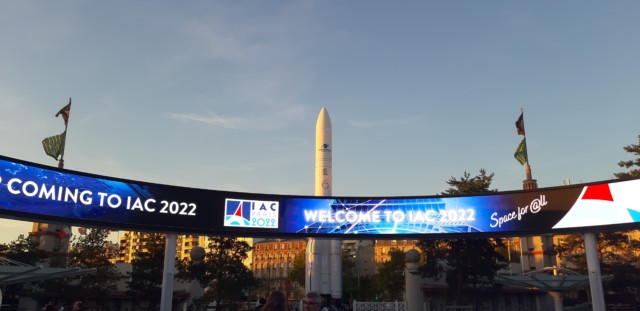
Such extraordinary success became tangible during the public day, when the IAC opens its doors to the general public. This edition welcomed around 2,200 people including space enthusiasts, universities, high school students, and families. A day entirely dedicated to space’s discovery and the future of the space exploration illustrated through the inspiring tales of Europe’s astronauts: Alexander Gerst, Matthias Maurer, Luca Parmitano and Thomas Pesquet.
This year, Eurisy team has been hosted at the European Space Agency (ESA) booth. This was the occasion to showcase the latest Eurisy publication “Satellites Going Local- Maritime Edition”. A booklet collecting case studies of satellite applications in the maritime domain. Eurisy was engaged in multiple initiatives on different areas related to the work carried out throughout the year. On September 19th Eurisy participated in a Special Session focused on “Building bridges between established and emerging space industry” organised by the Slovak Space Office. Member of Eurisy since June 2021, the Slovak Space Office the space industry branch of the Slovak Investment and Trade Development Agency (SARIO) in charge of developing the Slovak space ecosystem and establishing international professional cooperation of domestic companies with relevant actors.
The session organised during this past IAC is part of a broader set of initiatives to support emerging space nations to share best practices and boost their entrepreneurial ecosystem fulfilling the United Nations’ Sustainable Development goals. The panel counted on the expert views of Allison Areias-Vogel from United Nations Office for Outer Space Affairs (UNOOSA), Jonathan Hung from Singapore Space and Technology Ltd, Raycho Raychev of Endurosat, Temidayo Oniosun from Space in Africa, Matias Campos from Sideralis Foundation, Veronica La Regina from Nanoracks Europe, and Annalisa Donati from Eurisy. During the session, Annalisa illustrated how Eurisy creates and manages platforms to share experiences and best practices among its members, to forge partnerships thus favoring cooperation to develop national space programmes tailored on the strengths of the individual countries. Through its activities, Eurisy enhances the reach of national space initiatives providing international recognition and smoothing the path for stories of success like the signature of the Associated Membership Agreement between Slovakia and the European Space Agency. For those interested in the content of the discussion additional information are available here.
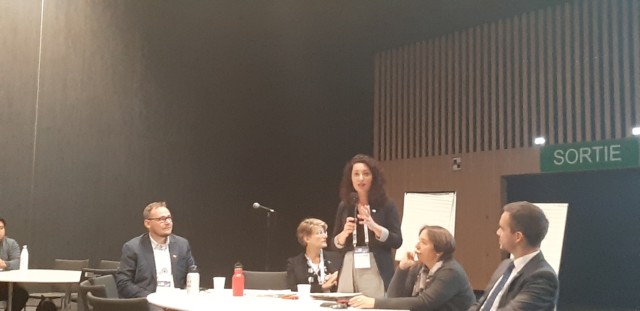
Eurisy also presented two technical papers as outcome of selected activities performed throughout the year. Since early 2022, Eurisy has been actively investigating into challenges and opportunities to use satellite based solution for Disaster Risk Management through a series of activities, culminating in the conference “Satellite-based Services for Disaster Risk Management”, held in Athens on May 25th and co-organised with the European Union Agency for the Space Programme (EUSPA) and the Greek Ministry Climate Crisis and Civil Protection.
The paper “Integrating Satellite Applications in Disaster Risk Management”. builds on this work shedding light on the potential for space-based solutions to contribute into the different phases of the disaster management cycle. The paper describes European and international mechanisms to access and share these information as well as the obstacles in their integration experienced from actual users in Greece, used as case study. The research also pursued to deepen the disaster risk management community among European states with regard to the integration of satellite applications, also through several recent case studies on the use of satellite-based services during disasters and extreme weather events.
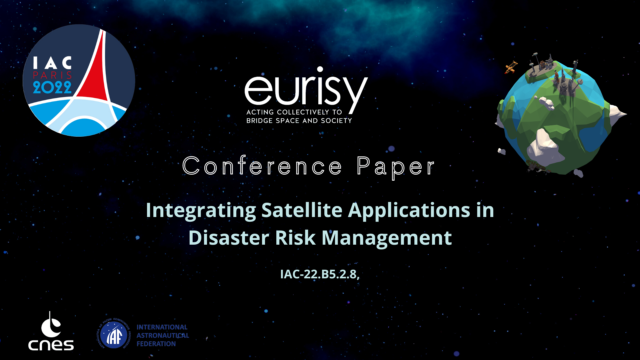
Another great opportunity for Eurisy was the presentation of the paper “GIS4SCHOOLS – Paving the Way For The School Of Tomorrow: Leveraging On Space Technology To Stimulate Steam Learning And Teaching”. Shortlisted as the best interactive presentation of IAC2022 for the Space and Society section out of more than 800 presentations, the aim of the paper was to present the latest development of the Erasmus+ GIS4Schools project. Underpinning the in-depth interviews with the schools’ representatives involved in the project and the data collected through the Digital Diaries, an open source mobile application to collect students’ feedback, the presentation provided an overview of the skills acquired by the teachers and pupils through the project. The paper also showcases the suit of freely accessible products developed by experts including the Training Handbook, available in 5 different languages, the e-leaning platform and the use cases.
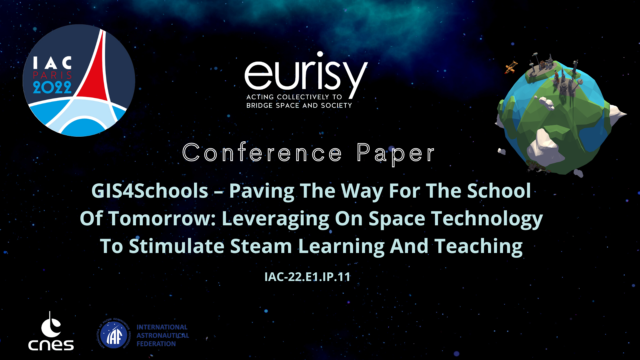
And that’s not all: Eurisy’s week was packed with additional important engagements such as the session dedicated to the Copernicus and Me project. With the support of the European Space Agency – which hosted us thoughout the week – Eurisy organised a session dedicated to the project, whose objective is to bring to non-space communities hands-on examples of what can be achieved by using data and services from the Copernicus satellite constellations. The session was the opportunity to showcase three video key case studies: VIDA: Supporting access to electricity in Sierra Leone, Mitigating the effects of climate change at public transport stops in Prague, and Safeguarding cultural heritage in Rhodes. The videos put the users on the spotlight to explain to their peers the befits they enjoyed by integrating those applications as well as the process for the development of tailor-made solutions addressing their specific needs.
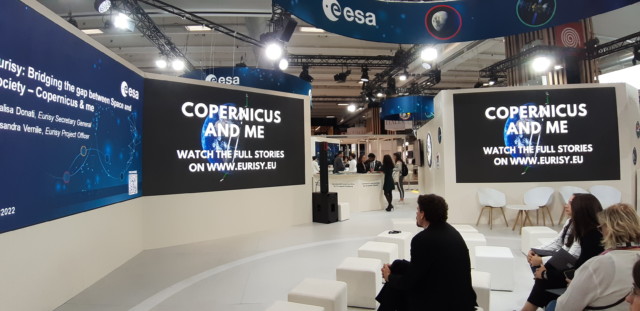
IAC was also the moment to celebrate the 10th edition of its very own Hubert Curien Award. The Hubert Curien Award is a historic biennial Eurisy award to the legacy of its founding father, Hubert Curien. It recognises the efforts to help society benefit from space. Every two years, a high-level international jury selects a winner among a list of nominated candidates among any person or organisation that demonstrated dedication in the field of international cooperation in space science and technology, or in the promotion of space applications and their benefits to society. This last edition was special not just because was the 10th anniversary of such a prestigious award, but also because it awarded Amalia Ercoli Finzi’s lifelong commitment and work in space exploration.
Visit our dedicated webpage to visit our dedicated webpage to learn more about the highlights of the 10th HCA and the acceptance video of this year’s winner.
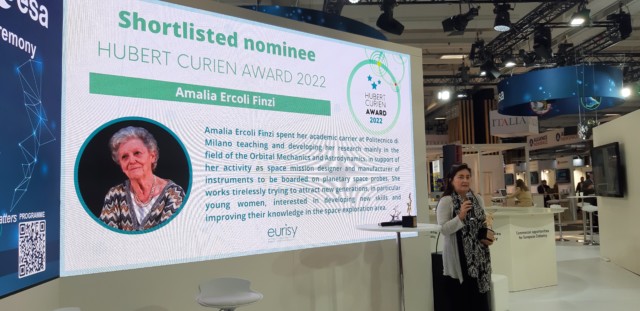
IAC 2022 brings with it a great deal of satisfaction for the achievements recognised by other colleagues and space actors and allow us to look to the future with confidence and with new relationships to cultivate. Until the next IAC!
